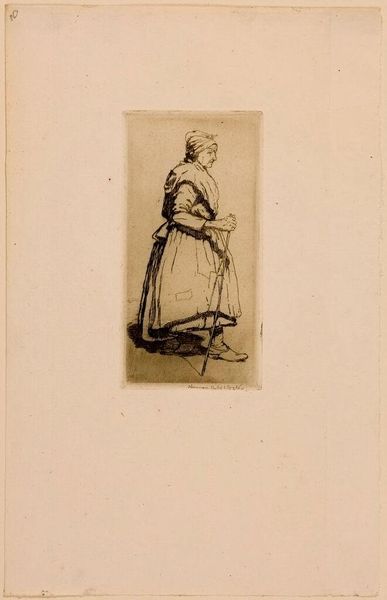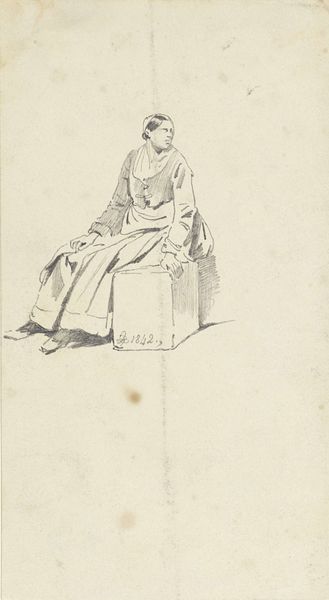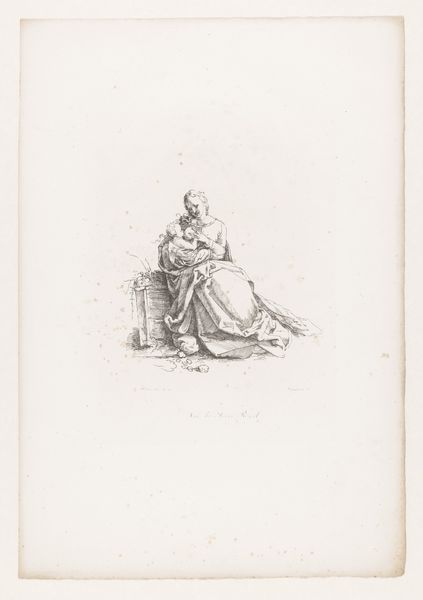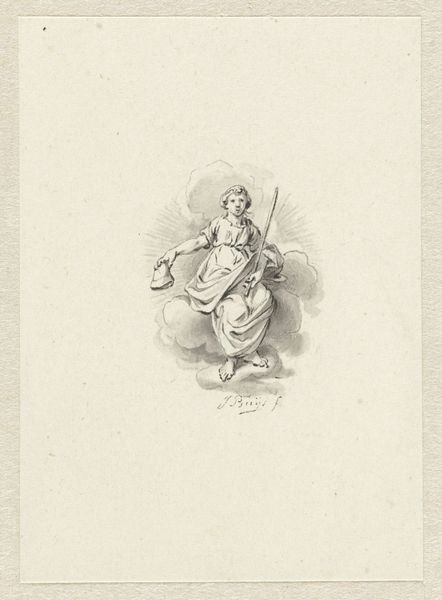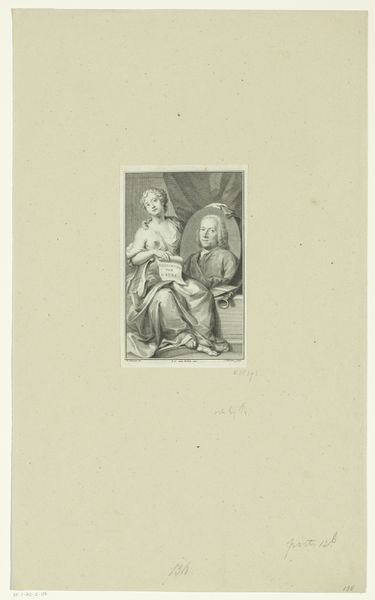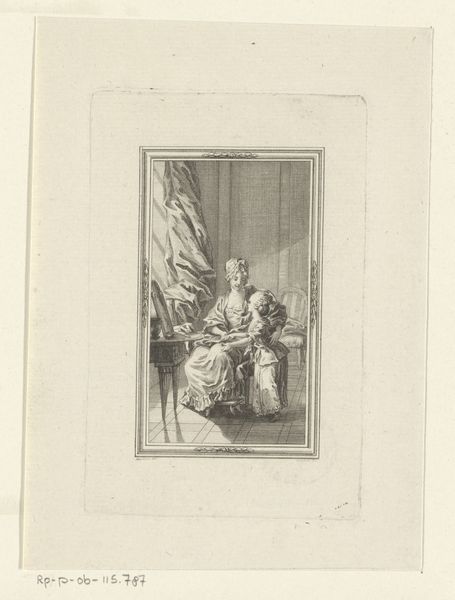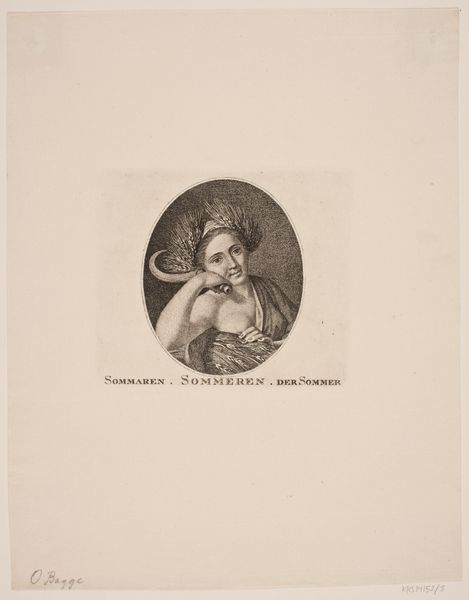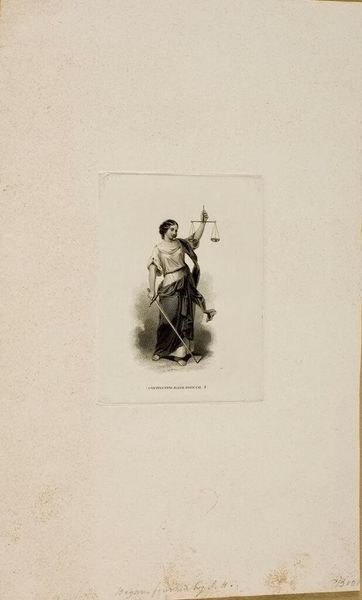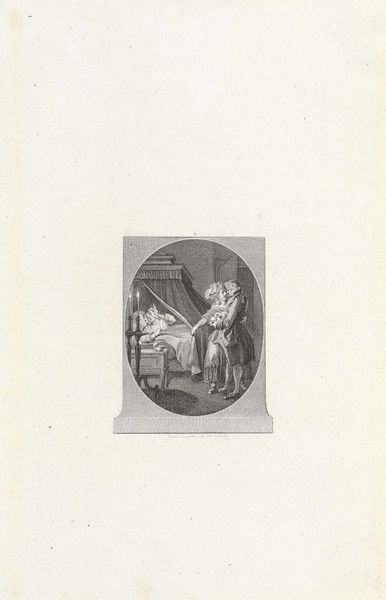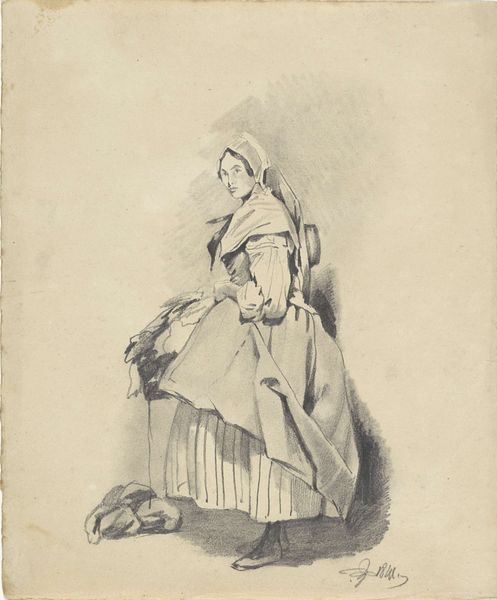
drawing, print, pencil, engraving
#
portrait
#
pencil drawn
#
drawing
#
neoclacissism
#
light pencil work
# print
#
pencil sketch
#
old engraving style
#
pencil drawing
#
pencil
#
pencil work
#
engraving
Dimensions: height 253 mm, width 155 mm
Copyright: Rijks Museum: Open Domain
Editor: Here we have Reinier Vinkeles' "Woman with a Helmet by a Half Column," created around 1800. It’s a print, a pencil and engraving piece. I'm immediately struck by the woman's confident posture, but the classical imagery feels a bit… removed, distant. How do you interpret this work? Curator: This piece invites us to consider the loaded visual language of Neoclassicism. We see a woman, allegorically adorned with a helmet, juxtaposed against the rigid structure of a classical column. Consider the period, around 1800; what do you think such symbolism was communicating, especially concerning ideas about female virtue or citizenship after the French Revolution? Editor: I see what you mean. The helmet and column suggest strength and tradition, but it’s also very controlled. It feels like a specific idea of womanhood being presented. Is it maybe about defining women's roles in the wake of revolution? Curator: Exactly. And let's think critically about that column – it’s only half there. What might that fragmentation represent? Perhaps a break with the past, but also an incomplete vision of the future. The woman gestures outward, towards something beyond the image itself. Could she be pointing towards an active role, even within a restrained symbolic framework? What do you think this image says about the constraints of the period on people living through revolutionary times? Editor: That's a really interesting point about the fragmented column and the active gesture. I hadn't considered how the composition itself speaks to the tension between revolution and restriction. This makes me think about the ways societal expectations of women persist and evolve even in moments of great change. Curator: Precisely. By examining the visual codes within the piece and thinking about the historical context, we can explore the complex relationship between artistic expression and social commentary, allowing for a greater understanding of women during revolutionary times. Editor: I definitely see it differently now. It's less a distant image and more a snapshot of a complex social moment.
Comments
No comments
Be the first to comment and join the conversation on the ultimate creative platform.
